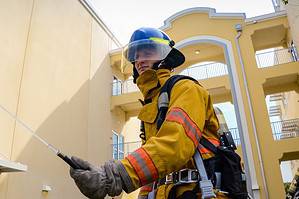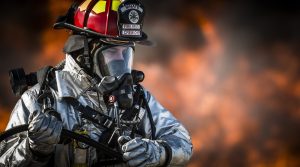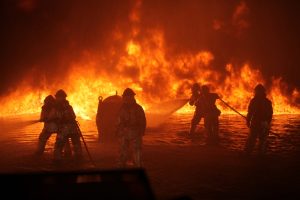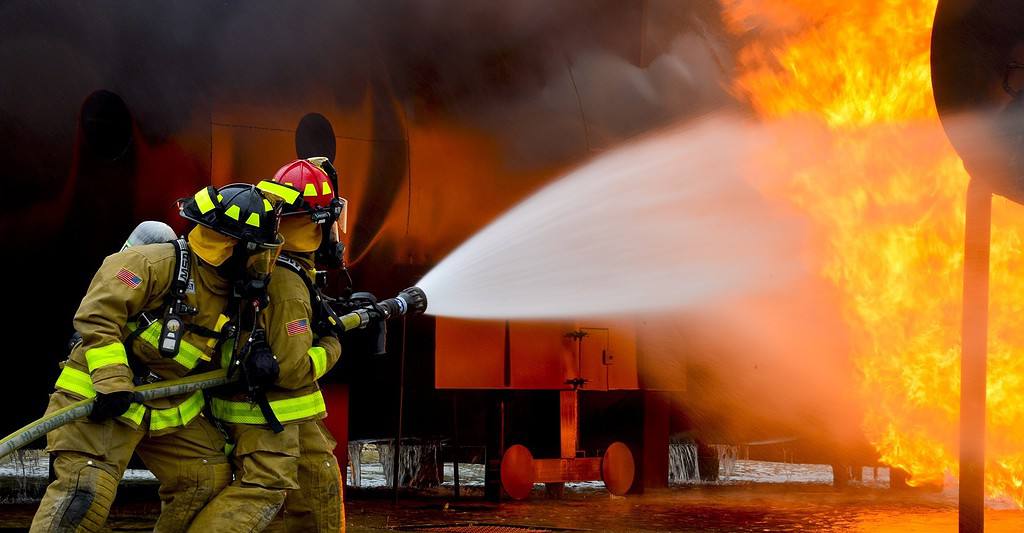Firefighting foam, or AFFF, is a tried and tested method for extinguishing huge fires. However, studies link AFFF to cancer development among individuals exposed to it for a prolonged period.
Cancers caused by firefighting foam are highly prevalent in various demographics. But who exactly is at risk of developing cancer from firefighting foam?
Well, AFFF cancers are a problem for everyone, not just firefighters. Many other people and locals are at risk of getting cancer.
Numerous victims of cancer and other disorders caused by exposure to AFFF have successfully sued the producers and distributors of this toxic chemical. The negligent production or distribution of AFFF without giving a warning of the adverse effects of exposure to AFFF serves as the premise for this litigation.
This post will list the groups of people disproportionately at risk of cancer from firefighting foam. Keep reading to the end to learn and know whether you may be entitled to file an AFFF lawsuit.
Firefighting Foam Cancer – Risks of AFFF to Firefighters
Firefighters are at the highest risk of developing cancer and other serious health problems due to exposure to AFFF.
Russian firefighters used AFFF in its original form, discovered in 1902, to combat fatal oil fires that water couldn’t put out. Since then, numerous variants of firefighting foam have been created using different ingredients and production techniques.
The American Navy never produced the AFFF firefighting foam until the mid-1960s. They still use it today, yet it causes serious health problems for many firefighters.
The effects of AFFF on firefighters have been the focus of many studies, including those conducted by Biomonitoring California and the University of Miami.

These studies found that firefighters have insanely high levels of perfluoroalkyl and polyfluoroalkyl substances (PFAS) in their systems and suffer vicious exposure to these toxic substances.
Perfluorooctanoic acid (PFOA) and perfluorooctane sulfonic acid (PFOS) are distinctive compounds that scientists and medical professionals consider particularly dangerous.
According to extensive lab and animal testing by researchers, these substances significantly raise the risk of developing cancer. They may also weaken the immune system and cause fertility issues.
Who Is at Risk After Exposure to Toxic AFFF?
The following groups of people are at an increased risk of developing cancer due to AFFF exposure:
Firefighter cancer risk
Firefighters have an undeniably risky job. They carry out their duties knowing the risks of injury they face. They, therefore, try to reduce this risk of injury by undergoing training and proper preparation.
But, for many years, firefighters across the US used AFFF without knowing its potentially lethal chemicals. Firefighters couldn’t take other health and safety measures because manufacturers failed to warn them of these hazards.
It’s possible to reduce the risk of AFFF cancer with safety gear and practices. The problem is that the foam is used in training and is mostly handled without protective gear.

So, firefighters may come into contact with the firefighting foam when using or disposing of it because they may not be wearing any protective gear.
The carcinogenic compounds in the foam, in turn, get absorbed into the body through the skin or inhalation, increasing the risk of cancer. These compounds build up in the body, causing several health issues, including cancer.
According to a 2015 study, the blood concentration of AFFF forever chemicals in Southern California firefighters was threefold more remarkable than the general public.
Airport worker cancer risk and AFFF exposure
Airports have historically used AFFF because it is particularly successful in putting out fires caused by jet fuel, exposing many airline employees to it.
Airport firefighting personnel are largely exposed to AFFF. But other airport staff may come into contact with the chemical when cleaning, disposing, or transporting it.
Military personnel cancer risk
Military troops also run a very substantial risk of exposure to AFFF and consequently acquire major health problems. Firefighters in the military branch are at significantly high risk of cancer resulting from exposure to AFFF.
The American Armed Forces have used AFFF firefighting foam since the 1960s. Like civilian firefighters, armed forces members got exposed to the harmful PFAS in firefighting form.
Their exposure goes beyond the usual firefighting emergencies when training on using AFFF. Military personnel exposed to AFFF include those in the following:
- US Navy
- US Army
- US marine corps
- Air force
- Coast guard
Specifically, AFFF firefighting foam has been utilized in military operations for many years to put out fires caused by jet fuel and in training practices. As a result, all military personnel likely faced exposure to this hazardous firefighting foam.

According to reports, the Department of Defense was aware of the risks posed by AFFF as far back as the 1970s. But they still exposed numerous military personnel by disregarding the hazards.
The phasing out of AFFF began recently. Unfortunately, the harm has already been done, and the consequences of AFFF infiltration in military base water systems continue until now.
The use of firefighting foam has led to PFAS contamination at 401 military bases, according to the Department of Defense.
Communities at risk due to contaminated water sources
The most upsetting fact about the discovery that AFFF causes adverse health effects is that its toxic substances have seeped into numerous communities’ water systems.
Civilian populations, like military bases, have been affected by PFAS contamination of water supplies. PFAS are often called ‘forever chemicals’ because they hardly degrade.
These pervasive and potentially harmful compounds can pollute nearby water supplies by seeping into them.
Firefighting Foam Risk of Cancer FAQs
Does firefighting foam cause cancer?
Firefighting foam contains substances that can potentially cause various cancers and other diseases. Those who serve as firefighters, service members, airport staff, or live nearby military bases may be more vulnerable to cancers associated with firefighting foam.
The following are some of the cancers associated with firefighting foam:
- Liver cancer
- Testicular cancer
- Pancreatic cancer
- Prostate cancer
- Kidney cancer
- Breast cancer
- Colorectal cancer
- Bladder cancer
- Neuroendocrine cancers
- Lymphoma and leukemia
What does AFFF foam stand for?
AFFF is an abbreviation for aqueous film-forming foam. It is predominantly used in firefighting across the nation. It works by extinguishing the fire and covering the gasoline that started it by forming a film between the oxygen in the air and the fuel.
How can I file a firefighting foam cancer lawsuit?
AFFF lawsuits are currently pending in multidistrict litigation (MDL). If you think your exposure to AFFF firefighting foam was why you developed cancer, you may seek legal action.

But since these cases are complex, you should seek the support of a legal team to defend your legal rights and interests. Experienced product liability or personal injury attorneys can evaluate your case and advice you on how to proceed.
Your attorney will initiate the process and represent you at every stage if you can file an AFFF lawsuit.
Talk to an Experienced AFFF Lawsuit Attorney Today!
Various members of society, including firefighters, military personnel, and civilians, are at risk of cancer due to exposure to PFAS. You may qualify to file a lawsuit if you are among these groups and have any of the mentioned conditions.
At Legal Giant, we can support you by linking you with an experienced lawyer. We partner with the best firefighting AFFF lawsuit lawyers who stand up for those in danger and fight to defend their entitlement to compensation.
Our partner lawyers will review your case, gather the evidence to support the claim, negotiate settlements, and represent you at trial if necessary.
Contact us for a free case evaluation today.

